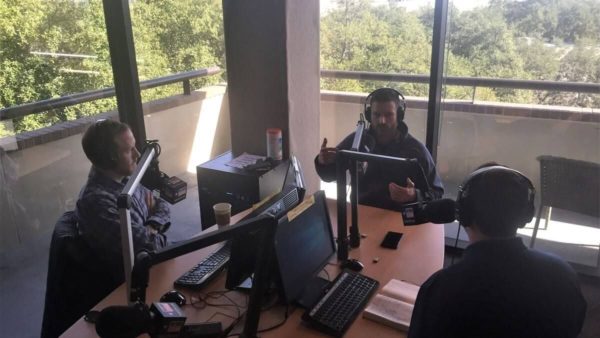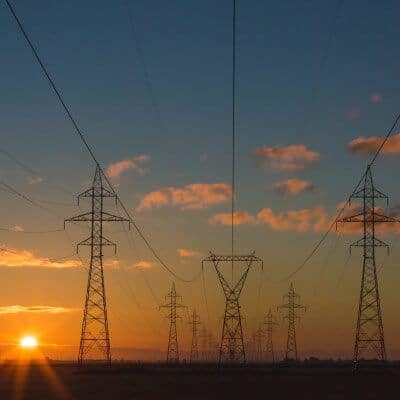Episode 31 | January 22, 2019
Dr. Joshua Rhodes, Ph.D., is a Research Analyst at the Webber Energy Group and The University of Texas at Austin Energy Institute. He explains how electricity supply and demand can be better controlled to bring more wind and solar power onto the grid, begin to address climate change, and help lower energy costs for all consumers.
From East Texas to the Future of Energy

Dr. Joshua Rhodes grew up close to the land in Nacogdoches where his father owned a sawmill. There, he developed a lifelong appreciation for conservation. “I’ve always disliked wastefulness,” Joshua explains. Throughout his adulthood, that philosophy has evolved into a passion for managing energy resources more efficiently.
His educational path and life experiences have reinforced those interests. Joshua went straight from an undergraduate math and economics double-major at Stephen F. Austin to a master’s degree in computational mathematics at Texas A&M. After graduating in 2008, just in time for the Great Recession, he briefly followed a friend to Colorado to work in the construction business. Joshua returned to Texas to earn a Ph.D. in civil engineering from The University of Texas at Austin, which has a top-notch green building program. From “axe ’em, jacks” to “gig ’em” to “hook ’em, horns”, he has cemented his status as a truly well-rounded Texan!
While in Colorado, Joshua met someone from the wind power industry. He learned that the biggest constraint to development in the state at that time was actually water access. There was not enough water to mix cement to poor the massive footings required for modern wind turbines. It was an “aha” moment that gave him a whole new appreciation for the interconnectedness of systems and the importance of managing limited resources.
That work has all come together at the Webber Energy Group and the Energy Institute at The University of Texas at Austin, where Joshua studies electricity markets, smart grids and distributed generation. Having studied both the supply and demand sides of the industry, he has a unique perspective on the changes and opportunities of the Texas electricity market.
The Supply Side
Joshua’s current research is focused on how the Electric Reliability Council of Texas (ERCOT) manages the grid and incorporates a growing amount of renewable energy generation.
“In both the Webber Energy Group and the Energy Institute, we’re trying to solve some of those big overarching problems that we have in our energy system,” he says.
The growing body of climate change research points to significant far-reaching impacts to the economy and society, and the majority of CO2 emissions are generated by energy generation, not only electricity but also transportation.
Renewable energy can help address climate change at a macro level, but and it also reduces water usage and pollutants at the state and local levels. In addition to the environmental benefits, wind and solar are cheaper than coal and, unlike natural gas, offer the stability of long-term contracts.
However, the intermittent nature of alternative energy presents unique challenges. As a general rule, people are not willing to compromise on comfort or mobility.
That is the root of the problem the team is trying to solve: as Joshua says, “How much [renewable energy] can we jam on the grid and still keep the lights on?”
Specific issues the team is researching include:
- Matching supply and demand: “In the old paradigm,” says Joshua, “we were able to control supply and react to demand.” The alternative energy sources being added to the grid do not always align perfectly with our energy needs and make supply more difficult to control.
- Stability metrics: One benefit of traditional, controllable generation is redundancy in case one part of the system fails. Power-electronics systems and storage could provide more stability.
- Transmission: Understanding the infrastructure required to supply wind and solar power to population centers, through the Competitive Renewable Energy Zone (CREZ) transmission lines for example, is key to increasing renewables.
Texas is a case study for renewable energy success. Wind and solar combined make up 20 percent of our electricity supply, which is higher than California, while keeping prices lower. Joshua and his team believe that the potential to add quite a bit more renewable energy to our grid, and determining that ceiling is one of the big questions they are working to answer.
The Demand Side
Joshua’s Ph.D. work was primarily focused on the demand side of electricity usage, starting with what we can learn from – and how we can apply – the “big data” being generated by smart devices on the grid.
He points out that as we lose some control over the supply side of electricity generation, we are gaining more control over the demand side. Better control allows us to align usage with the availability of lower-cost renewable resources.
Utility demand response programs offer a first step towards controlling consumer demand. As an example, Joshua shares that he is part of the PowerSaver Volunteer program, which provides a small financial incentive in exchange for allowing the utility to briefly cycle off his Nest thermostat during periods of peak usage. In 2018, he says, “Austin Energy bumped up the temperature 10 times or so over the summer. 9 of those 10 times I wasn’t home and didn’t even notice, and they gave me a rebate for it.”
Other opportunity areas include pool pumps, which don’t need to run during the heat of the day when air conditioners are running most often, and using the storage contained in the batteries of electric cars or EVs.
How does that help consumers? “The more efficiently we can use demand side resources, we can better incorporate a cleaner mix into the system,” says Joshua, “and that can bring down prices for everybody.”
A Bright Future
Joshua sees a bright future for Texas, with a cleaner energy mix and affordable electricity costs. The combination of lower, less volatile natural gas prices and more affordable renewable energy sources, especially solar power, should continue to keep electricity prices low. He says, “I think things are going to be relatively calm going forward because we have a lot of different levers we can pull to dampen down any volatility.”
Whatever the future holds, we will be able to thank the research and development efforts of Joshua and the Webber Energy Group team for helping us understand how to get there. Follow him on Twitter @joshdr83 for the latest news!
Links And Resources
- Webber Energy Group
- The Energy Institute at The University of Texas at Austin
- ERCOT
- CREZ lines overview
- Demand response overview from the U.S. Department of Energy
- Nest Learning Thermostat
- Austin Energy PowerSaver Volunteer demand response program
- Joshua Rhodes on Twitter
